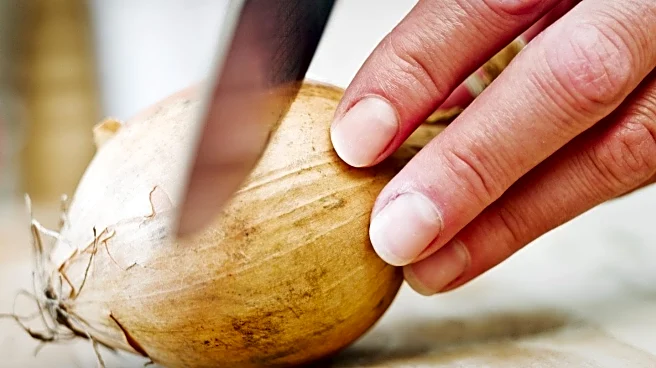What's Happening?
Researchers from Cornell University have identified a method to minimize the tears caused by chopping onions. The study found that using sharper blades and making slower cuts significantly reduces the release
of propanethial S-oxide, the chemical responsible for eye irritation. The research involved using a mini guillotine, high-resolution cameras, and sensors to analyze the mist expelled during onion cutting. The findings debunked the common belief that chilling onions reduces mist release, showing instead that sharp knives and gentle cuts are more effective in keeping the mist below eye level.
Why It's Important?
This discovery has practical implications for both home cooks and the food industry, potentially improving kitchen safety and reducing discomfort during food preparation. By understanding the mechanics of mist release, the study offers a scientifically backed method to mitigate the common issue of onion-induced tears. Additionally, the research highlights the importance of cutting techniques in preventing the spread of pathogens, as seen in past E. coli outbreaks linked to onions. This could lead to improved food safety practices, reducing the risk of foodborne illnesses.
Beyond the Headlines
The study also sheds light on the broader implications of cutting techniques in food safety. The ability to control mist release and droplet spread can be crucial in preventing contamination in food processing environments. This research could influence industry standards and lead to the development of new cutting tools designed to minimize mist and enhance safety. Furthermore, the findings contribute to a deeper understanding of the physical properties of food items, potentially informing future studies in food science and safety.













